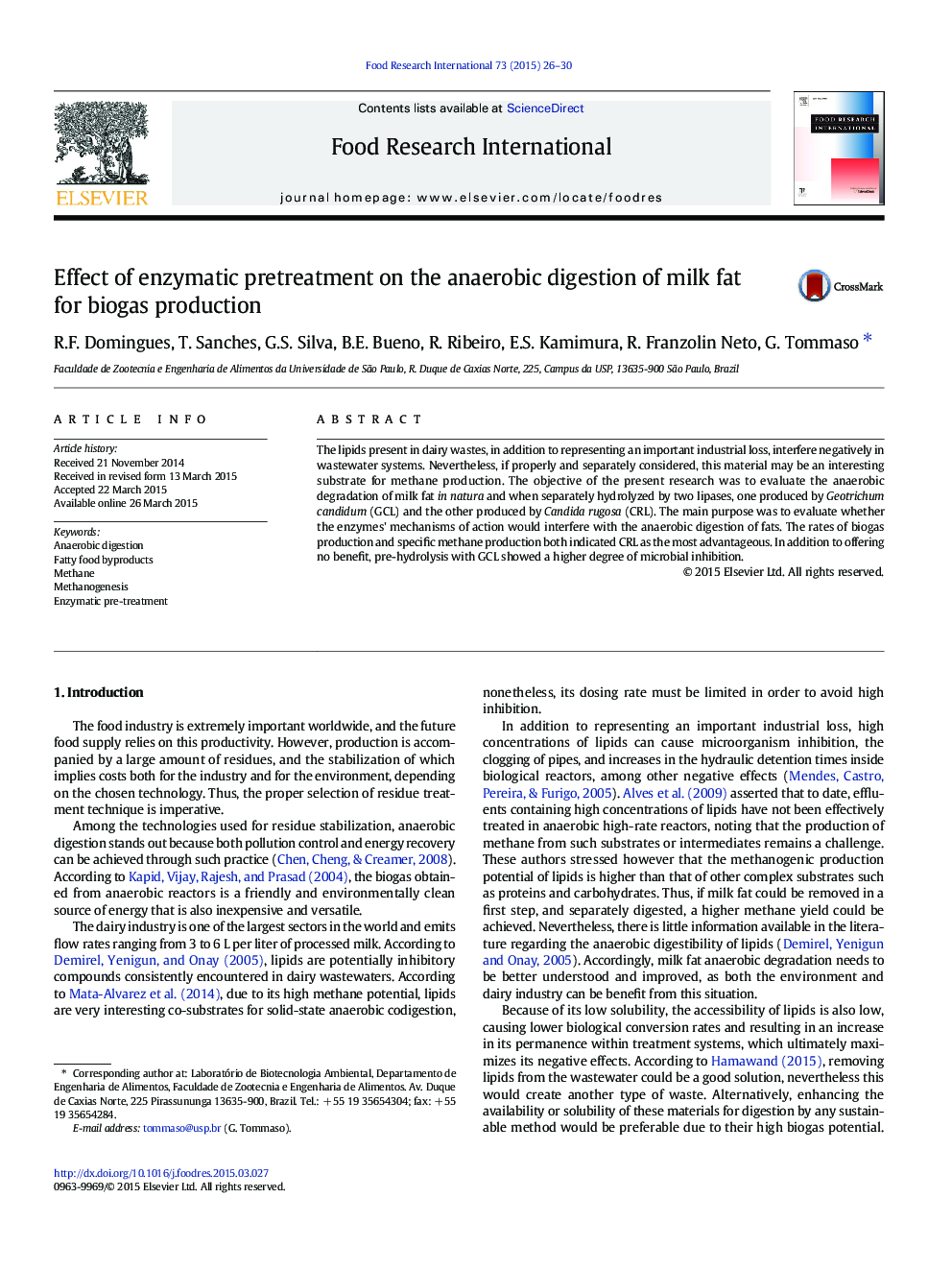| Article ID | Journal | Published Year | Pages | File Type |
|---|---|---|---|---|
| 6395423 | Food Research International | 2015 | 5 Pages |
â¢Lipids in dairy effluents represent an important industrial loss.â¢Such residues are harmful for the environment.â¢Lipids have big methanogenic potential.â¢Lipids are slowly degradable and may impair methanogenic consortium.â¢Lipases can enhance methane production.â¢Different hydrolyses were studied.
The lipids present in dairy wastes, in addition to representing an important industrial loss, interfere negatively in wastewater systems. Nevertheless, if properly and separately considered, this material may be an interesting substrate for methane production. The objective of the present research was to evaluate the anaerobic degradation of milk fat in natura and when separately hydrolyzed by two lipases, one produced by Geotrichum candidum (GCL) and the other produced by Candida rugosa (CRL). The main purpose was to evaluate whether the enzymes' mechanisms of action would interfere with the anaerobic digestion of fats. The rates of biogas production and specific methane production both indicated CRL as the most advantageous. In addition to offering no benefit, pre-hydrolysis with GCL showed a higher degree of microbial inhibition.
